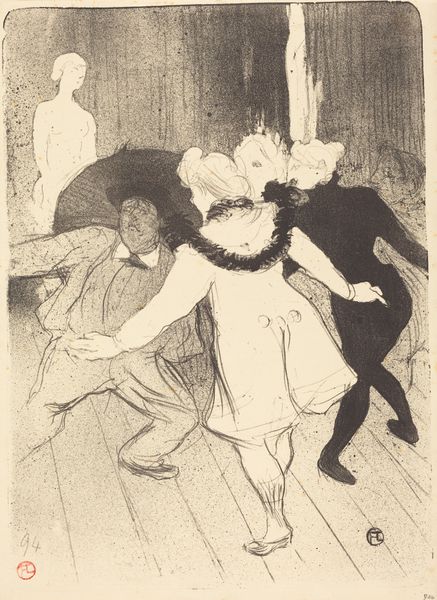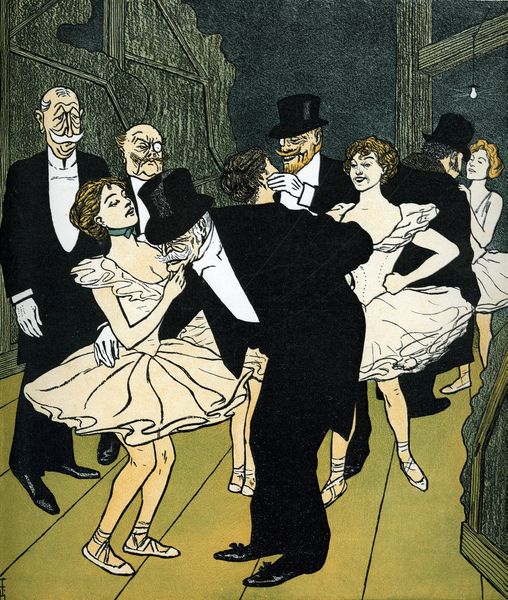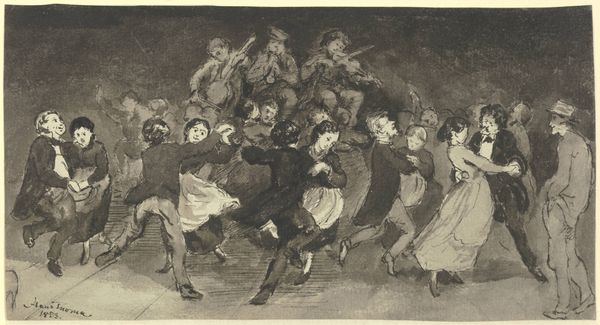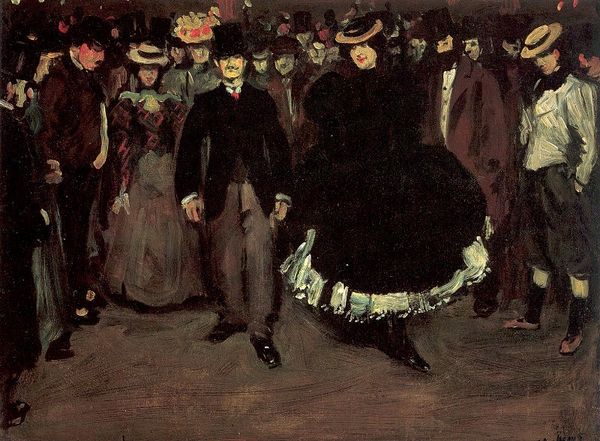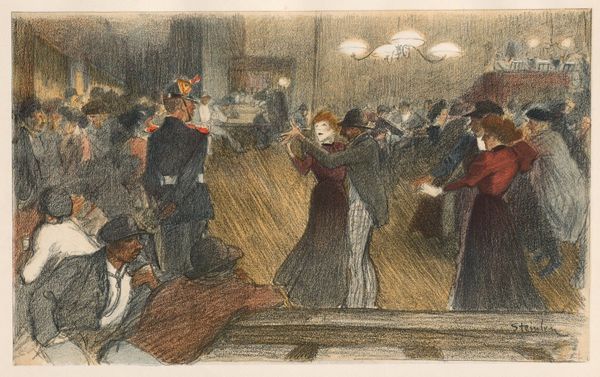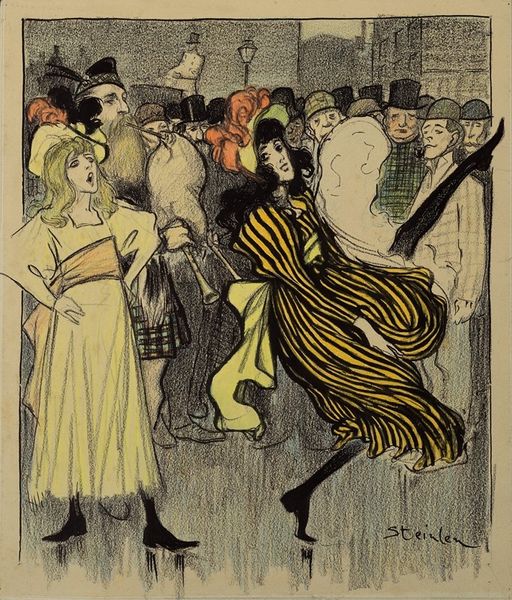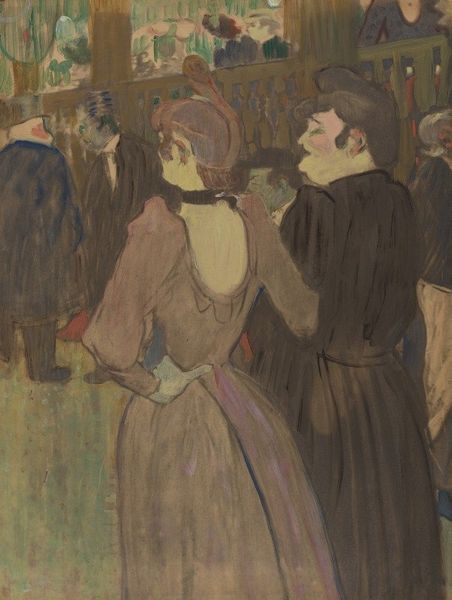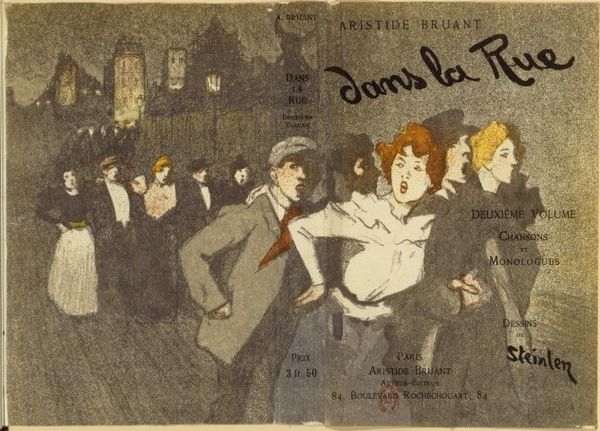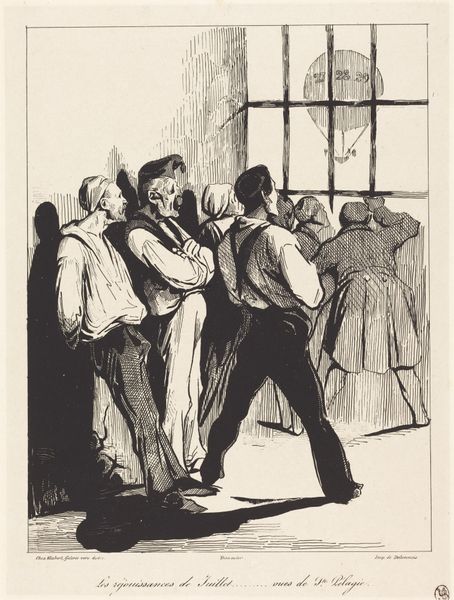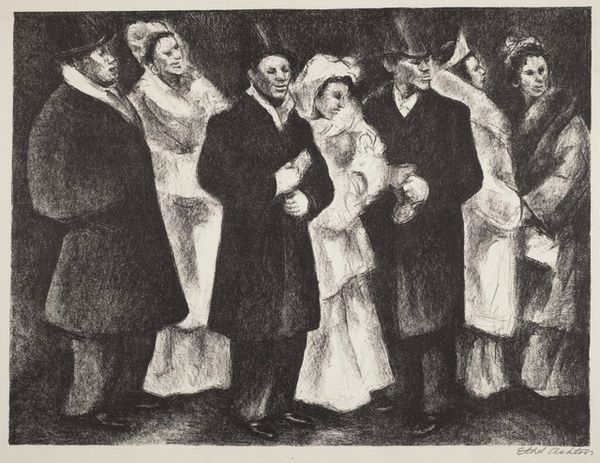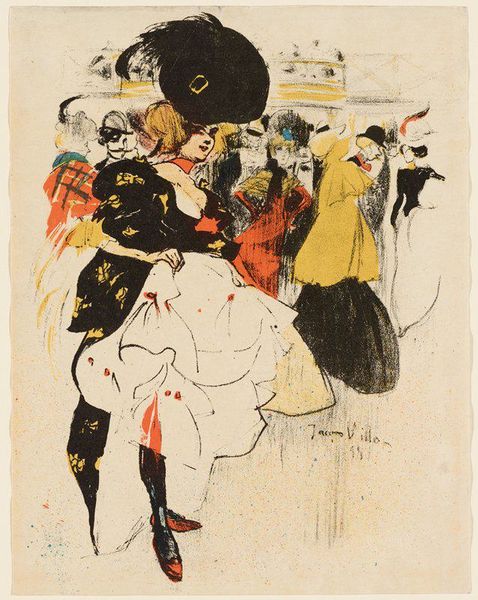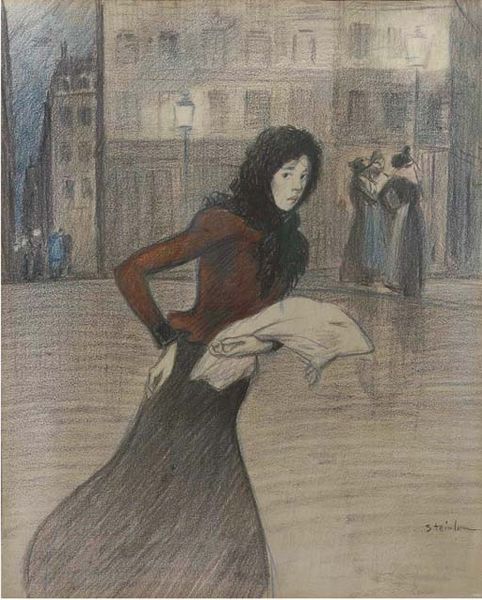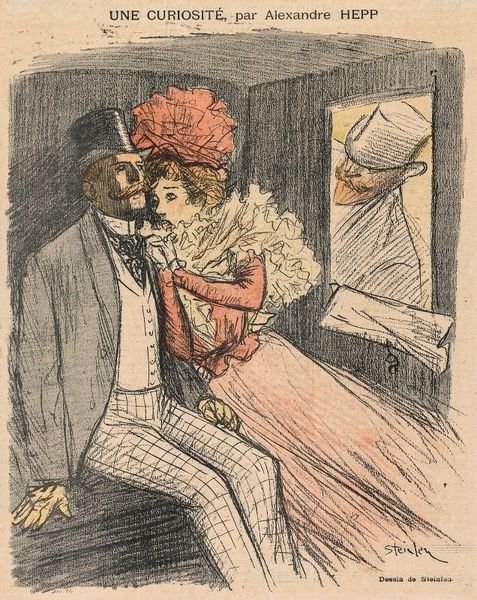
Copyright: Public domain
Editor: Here we have "Dans La Rue", a lithograph by Théophile Alexandre Steinlen, created around 1895. The bustling street scene, rendered in muted colors and dynamic lines, strikes me as both vibrant and a little chaotic. What do you see in this piece? Curator: Formally, the success of this work relies on Steinlen's masterful handling of line and composition. Observe how the artist uses diagonal lines to create a sense of movement, pulling the viewer's eye through the crowded street. Notice, too, the expressive quality of the figures. Do you see how their exaggerated gestures and facial expressions contribute to the overall dynamism? Editor: Yes, the almost caricatured expressions give the piece so much energy! But why emphasize the formal aspects over, say, the social context of the figures depicted? Curator: While social context certainly holds value, focusing on formal elements allows us to understand *how* the artist achieves specific effects. The strategic deployment of shading, for instance, isolates the foreground figures from those trailing in the background. Consider the balance created between areas of dense hatching and comparatively empty spaces; the composition is balanced despite being dynamic. Do you appreciate how Steinlen juxtaposes seemingly contradictory elements? Editor: I do. Analyzing the composition this way really highlights Steinlen's intentionality. Before, it just looked like a spontaneous snapshot of street life, but it's clearly much more considered. Curator: Precisely. By closely examining the formal relationships within the work, we begin to unlock the artist's underlying strategy, appreciating his control. Editor: That makes sense. Focusing on the lines and composition really opened my eyes to the artist's decisions. Thanks for sharing your insights!
Comments
No comments
Be the first to comment and join the conversation on the ultimate creative platform.
